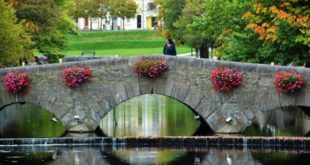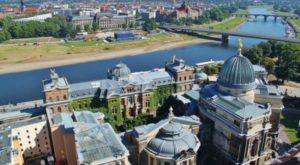
If there is a city that raises a great tourist interest in the east of Germany , in the regions that were part of the missing German Democratic Republic , that is undoubtedly Dresden .
Until my recent trip to this German city, I knew that Dresden was a city with a great historical heritage and a great beauty, which explains its nickname of Florence of the Elbe .
And above all he was aware of the great drama that Dresden lived after the great bombing suffered weeks before the end of World War II , with a fire that almost completely destroyed its historic center.
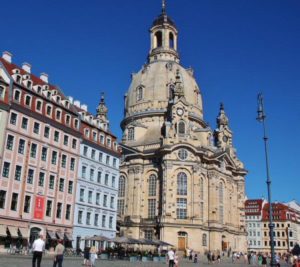
Now when visiting Dresden I have discovered a city that is still immersed in the long process of recovering its historical heritage.
The best example of this is the completion in 2005 of the Frauenkirche church , which has become the symbol of the reconstruction of the city.
Indeed, strolling through the historical center of Dresden you will be surprised once again by the great strength of the German people, and the works that are being carried out are a clear invitation to revisit this city in the future.
With all that said, you can ask why Dresden is not part of the Unesco World Heritage list .
As a curiosity, I will tell you that, in fact, it was integrated into that list in 2005, but due to the construction on a bridge that crosses the Elbe River , Unescoremoved the city’s recognition.

Curiosities history of Dresden
It was in 1206 that the city of Dresden was documented for the first time , which during the 15th century became the residence of the King of Saxony .
Soon it was run by the prince electors (members of the electoral college that elected the Emperor of the Holy Roman Empire ).
The relationship of the city of Dresden with the great fires is not limited to the drama experienced during the Second World War .
In 1685 the city already burned down completely, which caused a great later boom under the government of August the Strong ,
It was at this time when Dresden built a large part of its architectural heritage and began to earn the reputation of being a cultural city .

Subsequently Dresden was involved in several wars, specifically, against revolutionary France and Napoleon , but instead did not suffer the First World War .
While some of the historic buildings began to be rebuilt during the era of the German Democratic Republic , Dresden’s great heritage recovery took place after German reunification … and still continues.
What to see in Dresden in a day
Dresden is a city that is usually visited in a day , but I tell you that it has areas with enough interest to justify two or even three days of stay.
If you can only dedicate one day, my advice is to focus on the visit of the historic center , which you can do walking very comfortably, because its most important historical heritage is very concentrated there.

Guided tour of Dresden
As we always recommend in city breaks , the best way to start a city tour is to sign up for a guided tour.
In particular, a guided tour in Spanish will take you two hours during which you will get to know the most outstanding corners of the historic center, and it will help you to locate yourself in the city and then deepen your own on visiting the sites of greatest interest.
Go up to the Frauenkirche dome
Ideally, start your visit climbing the dome of the Fraunkirche , the great baroque church that was finished rebuilding in 2005, and which you find in the central square Neumarkt .
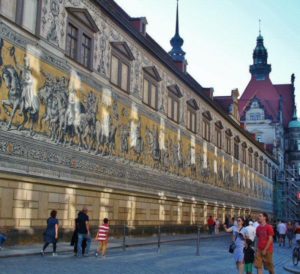
From the top of its imposing dome you will have the best panoramic views of Dresden and its surroundings, with the Elbe River as the main protagonist.
From this viewpoint you will have the opportunity to see panoramic views of the Catholic Cathedral of Dresden , or the Semperoper , headquarters building of the State Opera of Saxony , built in 1878.
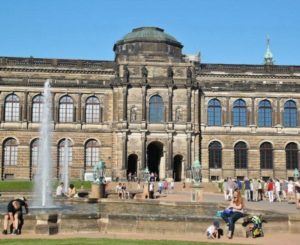
Procession of the Prince
On your walk you will also see other beautiful corners, such as the Procession of the Prince ( Fürstenzug ), a large wall in the street of more than 100 meters in length built with 24,000 tiles, in which all the rulers of Saxony are shown from 1123 to 1904
Or the bridge that connects the Royal Palace to another nearby building, which will remind you of the Bridge of Sighs in Venice .
Zwinger palaces in Dresden
You should also not miss the Zwinger , a complex of baroque architecture palaces from the early 18th century, whose best way to appreciate them is from its large interior garden courtyard, which houses various museums.
And you should also stroll along the Brühl terrace that runs along a section of the old wall, on the banks of the Elbe River .

Dresden in two days
If you are going to dedicate more than one day to the visit of Dresden , you will have the opportunity to discover other facets of this German city, after which your image of it will be much wider and more diverse than that of a set of Baroque monuments.
City Tour in Dresden
The best way to broaden your vision of Dresden is to take the City Tour panoramic bus (20 euros) with which you will not only visit the historic center, but above all, you will discover the most rural side of the city.
In addition, in recent years several towns have been incorporated into the municipality of Dresden, which extend along the banks of the Elbe River , some of which you can see in the tour of the tourist bus , which lasts for an hour and a half.
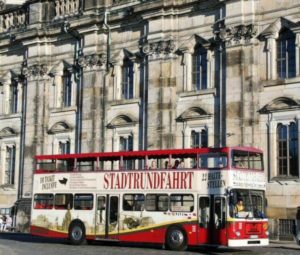
Thus, you will visit the Blasewitz district , with stately nineteenth-century villas.
Or the palaces of the Elbe , three palatial buildings that are located successively on the wooded hill that rises next to the river.
From the bus you will also see a residential neighborhood in the outskirts of Dresden, whose buildings are older than the ones in the center of the city because they did not suffer the bombings of the Second World War .
You can also see a 19th century iron bridge or the oldest funicular in Europe, and you will pass through the Great Garden of Dresden , a large landscaped park.
And I’m sure you’ll also be struck by the modern building of the Volkswagenfactory where the luxurious Phaeton model is produced , with all the glass facades, and where the workers wear white coats and gloves.
Another advantage of spending more than a day visiting Dresden is that you can take a very interesting excursion.
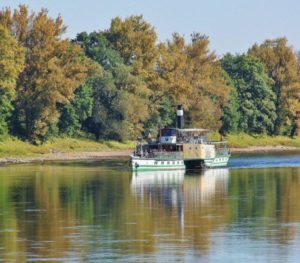
Cruise on the Elbe in Dresden
This is the Elba cruise to the palace of Pillnitz , which you make in a historic steamboat where in a very relaxed way you can see that other more residential and rural side of Dresden .
On this tour that will take you five hours in total, you will arrive at the aforementioned baroque palace of Pillnitz , which you can visit before returning back to Dresden .
Staying in Dresden will also allow you to get to know the Neustadt neighborhood , which will show you a very different image of the city.
It is an alternative neighborhood of young people, with more than 150 bars and restaurants, a kind of micro-republic with many houses occupied after the fall of the Wall .
The street art has a great role in the neighborhood, and if you want to delve into its history and idiosyncrasy, you can sign up for the guided night visits of Neustadt carried out by Danilo , a passionate neighbor of the neighborhood.
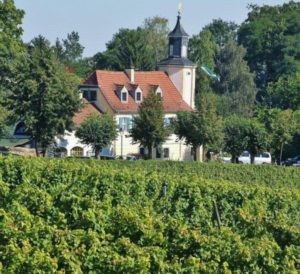
Wine Tourism in Dresden
On the other hand, did you know that Dresden is part of the Sächsisches Elbland wine area that stretches both banks of the Elbe River ?
This allows you to give added guidance to your visit to Dresden , beyond visiting its Baroque monuments.
So, for example, in the nearby town of Radebeul , where you can get there in just 15 minutes by local train, you can visit the street known as Calle del Vino , with several small wineries that follow one another on the side of a hill covered with vineyards.
In the case of my recent trip to Dresden, it coincided with the day of open doors.
In this way I was able to spend a day of wine tourism enjoying the pleasant outdoor terraces of the wineries, tasting various wines from the area surrounded by beautiful landscapes of vineyards.
How to get to Dresden
To get to Dresden , at present you do not have direct flights from Spain, so you’ll have to fly with a stop in some other German city such as Frankfurt or Munich, which will take you between four or five hours.
Here you have information about transfers from the Dresden airport that will allow you to get to the center in the most comfortable way.
 Countries To Travel Travel Tips and Plans
Countries To Travel Travel Tips and Plans





